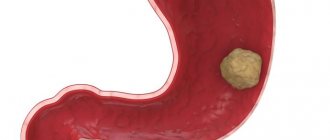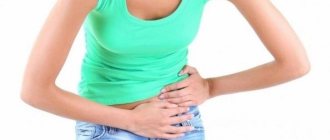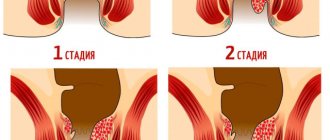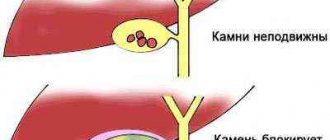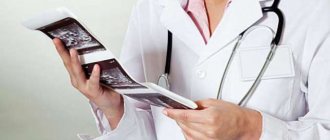Pain arising in the abdominal cavity, covering the lumbar region is a dangerous symptom .
In such a situation, it is important not to try to independently diagnose the disease or to suppress the pain syndrome with painkillers, but to promptly seek help from the attending physician , in some cases, call an ambulance.
Symptoms of this kind can be caused by pathologies, often associated with a threat to human life. The appearance of pain in men and women is influenced by different factors, so there are both common causes that provoke its occurrence, and those specific to gender.
Such combined ailments can be caused by both chronic diseases (the pain is felt nagging, aching, dull) and acute diseases (it is felt very intensely, often accompanied by internal bleeding).
If there is pain in the lower abdomen to the left of the navel
In most cases, such pain is caused by intestinal pathologies, genitourinary disorders or gynecological diseases. Only a doctor can accurately determine the cause of pain, taking into account the existing symptoms and the results of laboratory and diagnostic tests.
Gynecological diseases
In women, similar pain can occur with female diseases, for example, endometrial pathologies. Painful sensations are usually nagging in nature and are additional symptoms, so they cannot be considered as the main clinical manifestations. Nagging (sometimes paroxysmal) pain in the peri-umbilical region on the left or right side may indicate endometrial hyperplasia or endometriosis, as well as purulent-inflammatory processes in the uterine cavity.
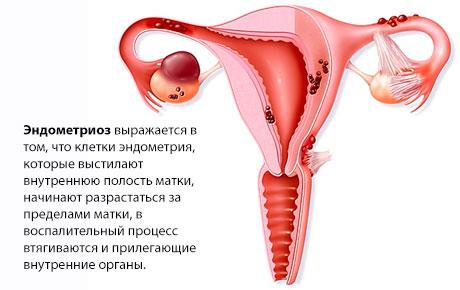
With benign formations (myomas and fibroids) of the uterus, the pain is of mild or moderate intensity and intensifies during sexual intercourse or intense physical activity. Other symptoms for these pathologies may be absent, so tumors can remain undetected for a long time.
Gynecological diseases in most cases have similar symptoms, in the presence of which one can suspect that the functions of the reproductive organs are impaired. Pathological symptoms include:
- bleeding from the vaginal tract;
- periodic increase in low-grade fever;
- increased pain during menstruation or intimacy;
- symptoms of anemia (weakness, headaches, nausea, dizziness);
- menstrual irregularities.
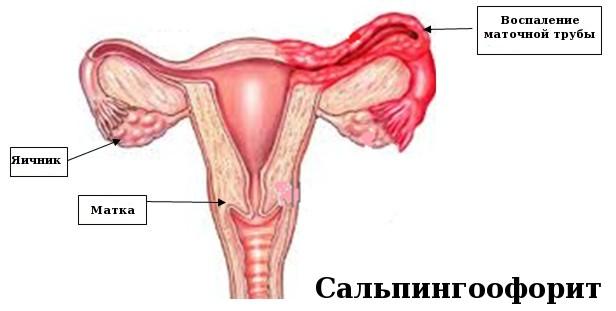
Inflammation of the appendages (salpingoophoritis) can also begin with a slight tingling on the left side of the navel (if the lesion affects the left appendage), turning into intense sharp or cutting pain, spreading to the lower and lateral abdomen.
Important! Severe pain to the left of the umbilical ring may indicate an ectopic pregnancy if the fertilized egg is implanted in the left fallopian tube, left ovary, or left side of the abdominal cavity. If, against the background of such signs, a jet pregnancy test shows two stripes, you must urgently consult a specialist, since even with a pathological location of the embryo, the result of express diagnostics will not differ from diagnosing a normal pregnancy.
Video - Possible causes of abdominal pain
Diseases of the genitourinary system
If pain to the left of the navel occurs against the background of symptoms characteristic of diseases of the urinary tract, you should consult a urologist. One of the most likely pathologies with such symptoms is cystitis. This is an inflammatory process on the walls of the bladder, which is often infectious in nature. Kidney pathologies (glomerulonephritis, pyelonephritis) can also cause pain in this area, but their intensity is usually higher.
This group of diseases is characterized by a general clinical picture:
- frequent and painful urination;
- burning and stinging at the beginning of emptying the bladder;
- temperature increase;
- cloudy urine (precipitation and blood streaks may appear);
- discomfort during intimacy.
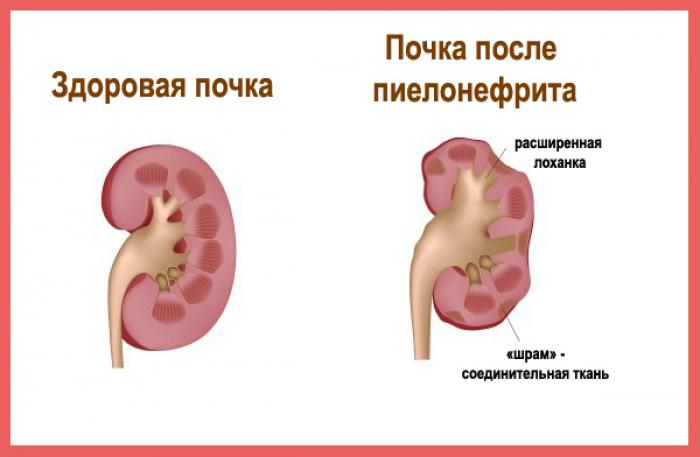
Condition of the kidneys with pyelonephritis
Treatment of cystitis and diseases of the renal system in most cases requires the use of antibiotics (Amoxicillin, Ampicillin, Flemoxin). Also used are herbal antiseptic agents (“Canephron”, “Cyston”) and herbal preparations to remove excess fluid and eliminate swelling (“Brusniver”).
Intestinal pathologies
Any disturbances in the functioning of the intestines can cause abdominal pain from the navel. The accumulation of gases caused by dietary errors and other dyspeptic disorders cause intestinal spasms and severe, cramping pain in the abdomen. Inflammatory bowel diseases, for example, colitis, enteritis or diverticulitis, can also cause pathological symptoms.
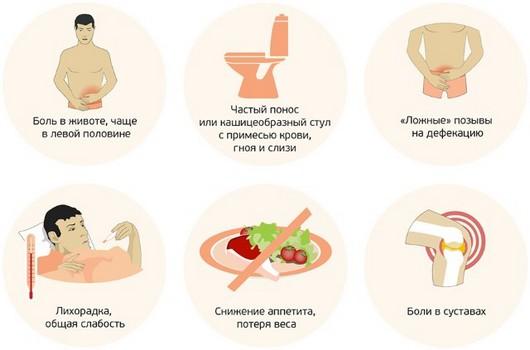
Intestinal diseases may be accompanied by the following signs, by which they can be easily distinguished from other diseases. These include:
- bowel problems (constipation or diarrhea);
- change in color and consistency of stool;
- the presence of streaks of blood, mucus and uncharacteristic inclusions in the stool;
- abdominal pain of different localization;
- painful bowel movement.
Important! These symptoms may indicate malignant processes in the intestines, so intestinal disorders cannot be treated without consulting a doctor.
Video - Why does the lower abdomen hurt?
Gynecological pain
In the case when a woman experiences pain in the lower left part of the abdomen, first of all, there is a suspicion of the development of pathology of the uterine appendages. There are several factors by which one can suspect the presence of a gynecological disease:
- Menstrual irregularities;
- The occurrence of pathological vaginal discharge;
- The presence of acute or chronic inflammatory process in the uterine appendages;
- Unfavorable medical history.
If a woman has pain in the lower left abdomen that develops suddenly and is characterized by the greatest degree of intensity, the patient requires immediate medical attention.
Symptoms of an acute abdomen can be provoked by ectopic pregnancy, acute inflammation of the appendages (adnexitis), hemorrhage into the ovary, torsion of the pedicle of an ovarian cyst. In such situations, the pain is cramping, cutting or stabbing in nature.
Pain caused by one or another gynecological problem radiates to the anus and to the area of the sacroiliac joint;
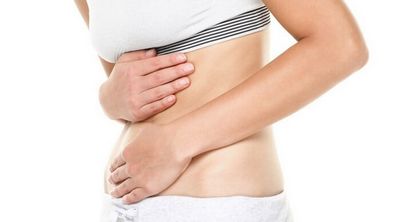
With the development of massive bleeding, due to a drop in blood pressure, pallor of the skin and mucous membranes, dizziness, general weakness and increased heart rate are noted;
With an ovarian abscess or accumulation of pus in the fallopian tube, patients complain of sharp throbbing pain;
If a large amount of blood or pus enters the pelvic cavity, pain can radiate to the supra- and subclavian region, as well as to the left hypochondrium;
With the development of acute left-sided inflammation, along with pain in the lower abdomen, the patient’s body temperature rises and purulent vaginal discharge appears.
In the presence of a chronic inflammatory process in the left appendage, patients complain of dull nagging pain localized in the lower left part of the abdomen. Often, painful symptoms are accompanied by the presence of mucopurulent discharge.
Under the influence of provoking factors (hypothermia, a stressful situation or physical overexertion, weakened immunity, etc.), an exacerbation of the pathological process is possible, accompanied by the occurrence of purulent complications. In the absence of adequate treatment, irreversible changes in the left appendage of the uterus often develop, which can lead to infertility.
In gynecological practice, there are often cases when neoplastic processes become the cause of pain localized in the lower left part of the abdomen. These can be either benign or malignant tumors on the ovaries. As a rule, benign cystic neoplasms make themselves known once they reach a certain size (when they begin to put pressure on nearby tissues and organs).
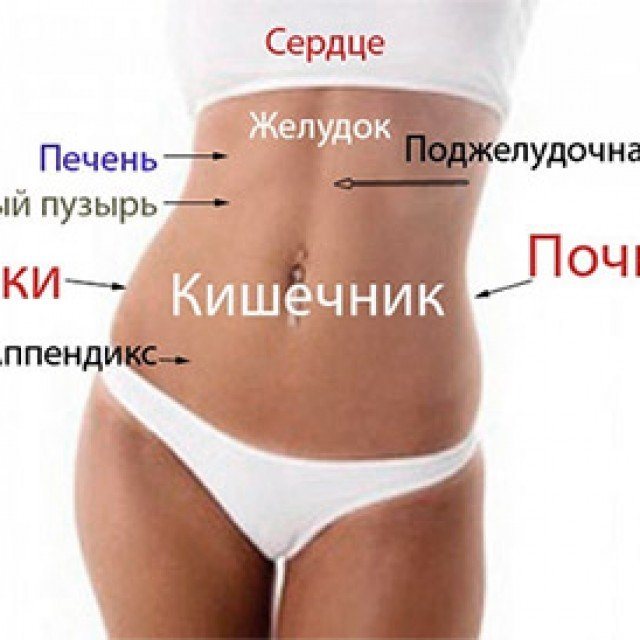
When a malignant tumor forms on the fallopian tube, patients complain of pain in the left lower abdomen already in the early stages of its development. Most often, the painful sensations are cramping in nature and are often accompanied by copious watery discharge. Gynecological oncopathology is detected in women who have reached 40-45 years of age and have entered menopause.
As for ovarian cancer, this pathology most often develops in the postmenopausal period and often does not manifest itself for a long time. Pain syndrome in this situation is observed against the background of symptoms of cancer intoxication and general exhaustion of the body, with the widespread prevalence of the tumor process. However, in clinical practice there are often cases when pain in the lower left abdomen with cancer of the left ovary makes itself felt in the very early stages of the disease. As a rule, they occur for no reason and have a short-term aching or pulling character.
Over time, pain occurs once every 4-5 days, lasts for 2-3 hours, and then subsides. In the case when the tumor grows into the pelvic cavity, the patient suffers from constant pain, which can change its character depending on the degree of damage to the organs and tissues involved in the pathological process.
What not to do if your stomach hurts?
Any abdominal pain, regardless of its location, should be a reason to consult a doctor. Before examination by a specialist, it is not permitted to:
- apply heat to the sore spot;
- take painkillers (with the exception of antispasmodics if the patient does not have signs of appendicitis);
- eat food;
- give enemas;
- try to empty the intestines using laxatives.
Before going to the hospital or arriving an ambulance, it is necessary to provide the patient with rest and avoid any physical activity. Dry ice can be used to relieve pain.
Pain to the left of the navel is not a specific symptom characteristic of certain diseases, but its occurrence cannot be ignored. There are many reasons that can trigger the occurrence of unpleasant sensations, so it is almost impossible to make a correct diagnosis at home. To determine what exactly caused the pain in the peri-umbilical region, it is necessary to take tests and undergo additional examinations, which may include ultrasound diagnostics, computed tomography, radiography of the peritoneal and chest organs, colposcopy and other types of studies. Colitis in the right side of the lower abdomen, read on our website.
source
Features of manifestation
To assess the degree of danger of a lower abdominal reaction, it is necessary to take into account the following characteristics: the nature of the pain, its intensity, localization and direction of irradiation, the presence of other accompanying symptoms, and the circumstances of its occurrence. According to the nature of the sensations in the lower abdomen in women, pain can be divided into the following types:
- Acute pain in the lower abdomen often becomes a signal of the presence of serious pathologies, in particular, blockage of the intestinal or urinary canals, conception outside the uterus, acute forms of diseases of the abdominal organs.
- Dull pain in the lower abdomen indicates the development of an inflammatory reaction in nearby tissues.
- Throbbing pain in the lower abdomen is usually associated with excess pressure in the abdominal cavity or internal organs with the presence of cavities;
- With some pathologies and functional anomalies, such a manifestation is noted as nagging pain in the lower abdomen in women, cutting pain in the lower abdomen in women and stabbing pain.
The time factor has informative value in primary diagnosis. According to this characteristic, pain is classified according to the frequency and duration of its course. It can be constant or have a certain periodicity, long-term and short-term. Constant pain is highly likely to arise from an inflammatory reaction, damage to organ capsules with parenchyma, and abnormal blood circulation.
Periodic pain can have both a pathological and physiological nature. They can clearly appear during sexual intercourse, when walking or physical activity. The combination of frequency and severity of manifestation leads to such types of pain syndrome as cramping pain in the lower abdomen, frequent or rare pain attacks.
Another important indicator that should be highlighted is the nature of the initial manifestation. Sudden sharp pain in the lower abdomen in women indicates the occurrence of an acute form of some disease or perforation, the opening of bleeding inside the body, the appearance of ruptures and other mechanical damage to organs. Such an onset of reaction can cause colic of the urinary organs or gastrointestinal tract. The slowly progressive development and intensification of the pain syndrome indicates the possibility of the emergence of a process associated with an inflammatory reaction.
What to do if you have pain in the abdomen to the left of the navel?
When there is pain in the left side, you need to take into account that many internal organs are located in the abdomen, so the root causes of the discomfort can be very different.

Important! In any case, when the patient’s left side hurts, it’s worth paying close attention to. You especially need to be wary if discomfort appears unexpectedly and lasts more than half an hour. In this case, it is better to play it safe and call an ambulance or immediately consult a doctor yourself. Since a number of diseases require emergency surgery and hospitalization.
The main causes of pain when pressing
Here are some of the possible pathologies that cause pain when you press your fingers on your stomach. For all pathological processes, pain on palpation does not become the only sign; it is important to pay attention to associated symptoms.
Acute gastritis
A common cause of pain when pressing on the umbilical and suprapubic areas is acute gastritis, in this case the stomach hurts. The disease is accompanied by symptoms:
- Nausea;
- Vomit;
- Diarrhea;
- Feeling weak;
- Grayish coating on the tongue;
- Increased salivation or, conversely, dry mouth;
- In some cases, a rise in body temperature.
It is important to confirm the diagnosis with a doctor, since pain when pressing fingers on the lower abdomen can indicate appendicitis.
Appendicitis
With appendicitis, pain becomes maximum when pressing on the right iliac part. During pressing, the discomfort does not reach its peak. It comes when the fingers are removed. This type of pain indicates a serious pathology and the need to urgently consult a doctor.
Stomach ulcer
When palpating the epigastric zone, a patient with a gastric ulcer will feel pain, accompanied by spontaneous tension of the abdominal muscles in this area. Muscle tension is felt especially well when you apply jerky pressure with your fingers on the stomach.
Duodenal ulcer
Pain when pressing on the right iliac zone, which is accompanied by spontaneous muscle tension, becomes a consequence of an advanced duodenal ulcer. In the early stages of the disease, there are no obvious pain sensations on palpation.
Pathologies of the spleen
Painful sensations on palpation are sometimes caused by an enlarged spleen. It is strictly forbidden to press hard on the area where it is located: the spleen is a fragile organ, its rupture can occur due to inaccurate palpation. If there is a problem with the spleen, a characteristic symptom appears - blueness of the skin surrounding the navel. The intensity of unpleasant sensations with an enlarged spleen can spread to the intestines due to its compression and displacement.
What organs are located on the left side?
To answer the question of what may hurt in the left side, you need to know what organs are located here.
To make a correct diagnosis, it is important to determine where exactly the discomfort is localized. Conventionally, the anterior abdominal wall is divided into 9 regions and 3 floors:
- 1st upper floor, it includes the epigastric, right and left hypochondrium;
- 2nd middle floor, which consists of the left and right lateral sections, between them is the umbilical region;
- 3rd lower floor, it includes the suprapubic region, left and right iliac region.

What is in a person's left side? The digestive and genitourinary organs are located here, namely:
- stomach (most of it);
- spleen;
- most of the pancreas;
- loops of the small and large intestine;
- left kidney, adrenal gland, ureter;
- female genital organs, namely the left ovary and oviduct, part of the uterus;
- male genital organs, such as the seminal vesicle, prostate.
Pain syndrome in the left side may appear as a result of a disorder in any of these organs. Depending on the root cause, it can have a different character, be constant or paroxysmal, aching, encircling, dagger-like, or radiating to the back.
Also, painful sensations in the left side can be caused by:
- endocrine disorders (diabetes mellitus);
- diseases of the cardiovascular system;
- connective tissue pathologies;
- hernia;
- respiratory diseases;
- pathologies of the nervous system.
Pain is divided according to the mechanism of its occurrence, as well as according to its characteristics, which allows making the correct diagnosis:
- Visceral pain that appears due to disturbances in the peristalsis of the stomach and intestines, when spasms and stretching of the muscles of these organs are observed. They can be dull and aching, for example, with increased gas formation, or cramping, if the patient has intestinal colic. They often radiate to adjacent areas of the body.
- Somatic pain, in most cases, has a clear localization and is observed constantly. It appears due to irritation of the peritoneum, for example, when a stomach ulcer ruptures. In this case, the pain will be sharp and cutting, intensifying with movement and breathing.
- Referred pain appears due to the irradiation of unpleasant sensations. It occurs in organs that are not localized in the left side and radiates here. For example, discomfort in the side can appear with left-sided lower lobe pneumonia, inflammation of the pleura and a number of other pathologies.
Causes of pain in pathologies of the spleen
In the early stages of spleen pathology, pain can be localized precisely in the left part of the abdomen. This symptom is usually provoked by the following possible diseases of this organ:
- Lymphocytic leukemia is an oncological pathology that is accompanied by damage to the spleen, liver and lymph nodes. This disease can be acute or chronic. It is accompanied by constant pain in the side, weight loss, exhaustion of the body and loss of appetite.
- A splenic infarction develops due to blockage of the arteries in the organ. In this condition, necrosis appears near the thrombosed vessel.
- A splenic infarction is accompanied by sharp nagging pain in the left side of the abdomen. In this case, the pain will intensify with porridge and movement. Fever and weakness may also occur.
Important! Splenic infarction is very easy to confuse with other diseases (infection, heart disease, etc.). For this reason, it is worth conducting detailed diagnostics.
- Volvulus of the spleen is accompanied by twisting of the splenic artery and nerves, from which the patient may feel pain in the lower abdomen, radiating to the groin.
The causes of this condition are considered to be injuries to the spleen due to a fall, accident or direct blow.
Moreover, quite often volvulus of the spleen is accompanied by vomiting, deterioration of stool and bloating. There is also weakness, pallor and sweating. The pathology is eliminated surgically.
- An enlarged spleen occurs due to disruption of blood flow through the main vein, leading to inflammation.
- A spleen abscess occurs as a consequence of the appearance of purulent inflammation in this organ. Symptoms of such a disease will be high fever, pain radiating to the left side of the abdomen, nausea and a sharp deterioration in the patient’s well-being. If the abscess is not eliminated, it can lead to rupture and peritonitis.
Pain in the hypochondrium on the left
The nature of the discomfort
Pain in the left side under the ribs can be:
- Spicy. If a sharp, dagger-like pain on the left side suddenly appears under your ribs, you should immediately call an ambulance. As a rule, it is observed when the integrity of the stomach, small intestine, spleen, or kidney is damaged. If acute pain on the left under the ribs is observed when inhaling after a fall or an accident, this indicates severe damage to internal organs. Any of these conditions can result in the death of the patient.
- Dumb. If for a long time there is a dull diffuse pain on the left in the hypochondrium, then this indicates sluggish diseases of the digestive tract, such as gastritis, pancreatinitis.
- Aching. Such pain, which is observed constantly, also indicates low-grade inflammation. It is characteristic of inflammation of the colon and duodenum. It is often a sign of angina pectoris, ischemic heart disease, or a pre-infarction condition.
Diseases that cause pain in the left hypochondrium
Useful article? Share the link
Discomfort in the left hypochondrium may occur with the following pathologies:
Gastritis . With inflammation of the gastric mucosa, aching pain is observed in the left hypochondrium.
In addition, the following signs appear:
- nausea, vomiting;
- heaviness in the stomach, intensifying and manifesting itself when eating or immediately after eating;
- heartburn;
- belching;
- bitterness in the mouth;
- constipation or diarrhea.
Symptoms unrelated to the digestive system may also develop:
- heart pain, arrhythmia;
- pallor;
- excessive sweating;
- drowsiness;
- symmetrical sensitivity disorders in the arms and legs;
- anemia caused by vitamin B12 deficiency.
Stomach ulcer . The clinical picture depends on the severity and duration of the pathology. With a stomach ulcer, left-sided pain is observed after eating.
In addition to them, signs such as:
- heartburn;
- sour belching;
- nausea and vomiting after eating;
- weight loss
Important! If perforation of a stomach ulcer develops, then a sharp dagger pain appears, pale skin, weakness, and possible fainting. This is a dangerous condition that requires urgent hospitalization.
Stomach tumor . If there is a constant pain syndrome in the left side, which does not depend on food intake, then this may indicate oncology. There are no specific symptoms of cancer. The patient may experience the following symptoms:
- loss of appetite;
- aversion to meat;
- dyspeptic disorders;
- weight loss;
- anemia;
- vomiting and bowel movements mixed with blood (observed in the later stages, when the tumor disintegrates).
In addition, pain in the left side can be associated with overeating, mechanical damage to the stomach.
Pain in the left hypochondrium is caused by pathologies of the spleen:
An enlarged spleen (splenomegaly) usually develops with Filatov's disease. In addition to pain, the following are observed:
- asthenia;
- constant headaches, including migraine headaches;
- vertigo;
- heat;
- arthralgia and myalgia;
- excessive sweating;
- frequent viral diseases;
- tonsillitis.

A splenic rupture is characterized by the appearance of sharp left-sided pain in the hypochondrium after physical impact on the organ. One of the main signs of pathology is the appearance of a bruise around the navel; a hematoma may be observed in the left side of the abdomen; pain may radiate from the hypochondrium to the back. In this case, you need to urgently call an ambulance.
In addition, pain in the left hypochondrium can be observed:
- with a hernia of the diaphragmatic opening of the esophagus;
- for pathologies of the heart and blood vessels, such as cardiomyopathy, in which, in addition to pain, there is tachycardia, fatigue, ischemic heart disease, accompanied by aching pain, burning behind the sternum, shortness of breath, increased heart rate, nausea;
- with diseases of the respiratory system, namely left-sided pneumonia, as a rule, the pain is dull, not very pronounced, but when coughing, the patient may note that there is colitis in the left side and chest; with the development of pleurisy, pain intensifies not only when coughing, but also when breathing, changing body position;
- with intercostal neuralgia, the nature of the pain can be very diverse, it can be sharp, aching, dull, burning;
- for diseases of connective tissue and spine;
- for injuries.
Tumor in the left lower abdomen in women
If the left side of the lower abdomen hurts in women, what could be the reasons? Topographically, several organs are projected onto the left iliac region:
- sigmoid colon - the part of the large intestine that precedes the beginning of the rectum;
- left ureter;
- left appendage.
And pain in the lower left abdomen in women indicates inflammation of these organs.
Pain of intestinal origin
The cause of pain in the lower abdomen may be inflammation of the sigmoid colon. The pathological condition is accompanied by characteristic symptoms:
- severe pain that precedes the release of the intestines, and intensifies with prolonged standing and shaking;
- acute pain is accompanied by tenesmus (a false and very painful desire to have a bowel movement);
- the painful syndrome is combined with severe diarrhea;
- the stool visually resembles meat slop due to the presence of blood impurities in its composition, and also has a very unpleasant odor;
- In the stool you can notice various pathological inclusions - purulent mucous and blood.
The sigmoid colon looks like an S-shaped curved part of the intestinal tract, located before the rectum. And it is isolated inflammation of this part of the gastrointestinal tract (GIT) that is diagnosed in exceptional cases. Very often the following rectum is also involved in the pathological process.
The specific structure of the sigmoid colon causes stagnation of intestinal contents. And therefore, the formation of feces is completed here. But it is physiological bends that cause the development of all kinds of pathologies - tumor, inflammatory and degenerative processes.
Most often, pain in the left side is caused by the following diseases of the sigmoid colon:
- infectious pathology – dysentery and conditions reminiscent of it;
- colitis of non-ulcer origin;
- nonspecific inflammation;
- nonspecific ulcerative colitis;
- Crohn's disease;
- ischemic sigmoiditis;
- Oncopathology of the sigmoid colon.
Dysentery and related infections
The causative agents of dysentery are most often Shigella, other microorganisms cause the disease much less frequently. The toxins they release can provoke the development of ulcers in the terminal colon.
This causes the development of acute sigmoiditis, accompanied by characteristic symptoms: frequent diarrhea, tenesmus, cramping pain in the left side of the abdomen, the presence of blood, pus and mucus in the stool. When bowel movements are too frequent, the patient's stool consists of mucus, including pus and blood.
Transmission of dysentery and similar intestinal pathologies is possible in several ways: through food, contaminated hands, water. Quite often, infectious agents enter the external environment from carriers of pathological bacteria. Such people do not show signs of the disease, but are carriers of bacteria. Dysentery has an acute onset.
At the initial stage, the symptoms of the pathology resemble gastroenteritis:
- attacks of nausea ending in vomiting;
- frequent loose stools;
- pain in the abdomen, but the person cannot indicate the exact place where it hurts;
- increase in body temperature to serious levels;
- signs of intoxication - headaches, muscle pain, drowsiness, general weakness.
If a characteristic clinical picture develops, it is necessary to obtain qualified medical advice. In the absence of adequate therapy, dysentery can become chronic. In this case, it is characterized by frequent relapses.
Chronic nonulcerative sigmoiditis
Chronically occurring non-ulcer sigmoiditis is included in the group of polyetiological diseases, i.e., provoked by several factors at once. Disruption of intestinal microflora plays an important role in the formation of the disease. That is why the occurrence of pathology can be facilitated by:
- long-term use of drugs from the antibiotic category;
- severe gastrointestinal infections;
- giardiasis;
- toxic infections.
The development of intestinal dysbiosis is typical for these conditions. The pathology is characterized by a sharp bursting pain in the lower abdomen, radiating to the groin area and often felt in the perineum. The pain intensifies during physical activity and when making sudden movements.
The difference between chronic non-ulcerative sigmoiditis and other pathological conditions of the sigmoid colon is the alternation of persistent constipation with diarrhea. During prolonged periods of exacerbation, the patient may develop cerebrovascular disease.
Signs of nervous system exhaustion include:
- headache;
- irritation;
- increased fatigue;
- development of phobias and depression;
- decreased performance.
Nonspecific inflammation of the sigmoid colon
Cramping pain, affecting the lower left abdominal area, develops in the presence of ulcers on the walls of the sigmoid colon. Their appearance is not associated with the activity of pathological bacteria. A painful syndrome with a similar diagnosis occurs during an exacerbation of any gastrointestinal pathology and is accompanied by the following clinical picture:
- frequent loose stools with a terrible odor;
- the presence of pure blood in the stool;
- signs of intoxication of the body - fever, headaches, weakness, etc.
Nonspecific ulcerative colitis
Nonspecific ulcerative colitis belongs to the group of severe pathologies of the large intestine. The disease is typically characterized by the formation of superficial ulcerations on the intestinal mucosa.
The disease is diagnosed in young people aged 20–40 years and is always difficult. Its main symptom is the development of frequent diarrhea. In this case, liquid stool includes a large amount of blood. If the stomach begins to hurt constantly, then this indicates the appearance of local complications - perforation of ulcers, toxic expansion of the gastrointestinal tract.
Crohn's disease
Pain in the left lower abdomen in women may indicate the development of Crohn's disease. This pathology is a severe disease in which segmental damage to the gastrointestinal tract is recorded. Inflammatory infiltrates form on the mucous membrane of the sigmoid colon, transforming into deep cracks.
In case of damage to the sigmoid colon, the stomach hurts in the lower left. Soreness occurs periodically and is manifested by throbbing pain that precedes the release of the intestines and disappears after bowel movement. A dull, aching pain of a constant nature indicates the formation of adhesions in the pelvic area. A sign of the condition is increased pain when changing body position.
Ischemic sigmoiditis
The reason why the left lower side of the abdomen hurts is ischemia (poor local circulation) of the sigmoid colon. The pathology is diagnosed in old age and, as a rule, is accompanied by confirmed diseases associated with the presence of atherosclerotic plaques.
Ischemic sigmoiditis occurs in an isolated form. Disorders of local circulation cause the appearance of non-healing ulcers, which later turn into scars. The result is a narrowing of the lumen of the sigmoid colon.
The clinical picture of ischemic sigmoiditis resembles the course of nonspecific ulcerative colitis, but still has its own characteristic features. In particular, pain occurs after a heavy meal, which is due to the need of the sigmoid colon for good blood circulation, which is impossible with this disease.
It is paroxysmal in nature, and the attack itself can last for quite a long time - up to 3 hours. The disease is accompanied by severe pain. To avoid their development, the patient deliberately begins to take less food.
Oncopathology of the sigmoid colon
A woman diagnosed with sigmoid colon cancer has pain in her left lower abdomen due to the development of concomitant complications. These may be:
- Gastrointestinal obstruction. With the development of obstruction, a person experiences cramping pain that occurs against the background of moving constipation and diarrhea.
- Disintegration of the tumor, accompanied by the formation of a bleeding ulcer.
- Intensification of the inflammatory process, aggravated by the addition of a secondary infection. The reason for this is injury to the neoplasm from feces. And then the pain in the left side of the abdomen is accompanied by a change in the appearance of the stool: it contains pus, mucus and blood.
If such symptoms appear, the doctor may suspect the patient has oncopathology of the sigmoid colon and prescribe appropriate tests and instrumental studies.
Pulling pain due to gastrointestinal lesions
A nagging pain can bother a woman with the development of irritable bowel syndrome. Its signs may include: spasmodic pain, loose stools, flatulence. There is an increase in symptoms during stressful situations. In the absence of qualified medical care, the disease becomes chronic and requires more complex treatment.
Spleen diseases
The causes of pain in the lower abdomen on the left may arise due to diseases of the spleen. It can be:
- Lymphocytic leukemia or myeloid leukemia. The pathology occurs in three stages. Soreness appears as the disease moves to the second stage and intensifies in the third. The disease is accompanied by aching pain spreading throughout the lower abdomen. It radiates to the inguinal lymph nodes, joints and pelvic bones.
- Abscess. When small lesions form, self-healing is possible. If there are large ulcers, they can open with purulent contents pouring into the abdominal cavity. Peritonitis develops, which is characterized by severe pain of a diffuse nature, determined in the lower abdomen on the left. There are also other signs of inflammation.
- Volvulus of the spleen. The pathology is formed due to stretching of the ligaments holding the organ as a result of injury or a hereditary factor. The pathology is accompanied by severe pain, spreading to the groin area. Additionally, it is accompanied by vomiting, problems with bowel movements, and increased gas formation. The severity of the pain depends on the angle of torsion.
Source: https://shokomania.ru/opuhol-vnizu-zhivota-sleva-u-zhenshhin/
Left-sided pain in the iliac region
Pain in the left lower abdomen due to gastrointestinal diseases
Left-sided pain in the lower abdomen can be observed with such pathologies as:
Colitis , in which, in addition to aching pain in the lower abdomen, the following are observed:
- false urge to have a bowel movement;
- flatulence;
- diarrhea, sometimes with mucus and blood.
With nonspecific ulcerative colitis, not only inflammation of the walls of the colon is observed, but also ulceration of the mucous membrane, in which, in addition to the symptoms described above, the following signs may appear:
- heat;
- weakness;
- loss of appetite;
- weight loss;
- arthralgia;
- violation of water-salt balance.
Intestinal obstruction . Its earliest manifestation is pain in the abdomen; it occurs regardless of food intake and can appear unexpectedly at any time of the day or night. They are of a cramping nature. As the pathology progresses, they usually subside within 48-72 hours, but this is a dangerous symptom.
- constipation;
- bloating and asymmetry of the abdomen;
- nausea and repeated vomiting.
Also, pain in the left lower abdomen can be observed with intestinal cancer . They are usually blurred and weakly expressed, but still they are constant and not associated with food intake.
- constipation;
- bloating and rumbling in the intestines;
- blood in the stool.
Left-sided pain in the lower abdomen in diseases of the female reproductive organs
Pain in the lower abdomen on the left side can be observed with diseases of the female genital organs, such as:
- inflammation of the appendages, with which pain can be observed not only in the lower abdomen, but also in the groin and lumbar region; in addition, there may be an increase in temperature, asthenia, cephalgia, myalgia, problems with urination; chronicity of the disease is characterized by dull pain in the left side, groin, in the vagina, menstruation and sexual function disorders;
- torsion of an ovarian cyst, in which, in addition to severe pain, a disturbance in general health, hypotension, fever, and vomiting are observed;
- ectopic pregnancy, which can cause rupture of the oviduct or ovary, resulting in sharp, unbearable pain.
Important! If an ectopic pregnancy is terminated, urgent hospitalization is required, since in this case there is a threat to the patient’s life.
Pain in the left side behind can be observed with heart disease. This sign is most often characteristic of myocardial infarction, although it can also be observed with angina pectoris, enlargement of the aorta, and pericarditis. With myocardial infarction, there is a sharp pain in the heart, which extends to the left shoulder blade, side, upper limb, and neck. In addition, the following appears:
- cold sweat;
- nausea;
- dyspnea;
- dizziness;
- pre-fainting state.
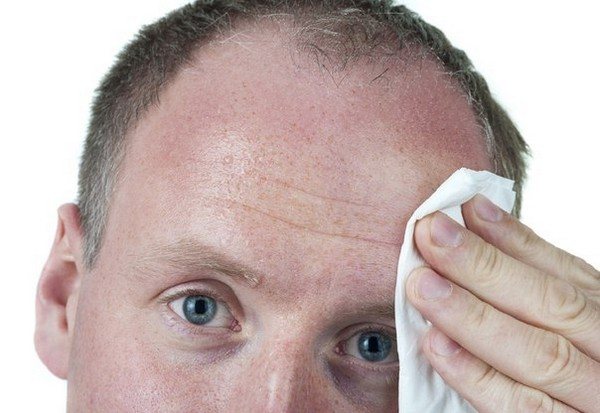
Why does pain occur in the lower left abdomen?
PMS
08.03.2018
18.4 thousand
12.3 thousand
6 min.
Pain in the left lower abdomen in women occurs primarily due to gynecological pathology; less commonly, it can be caused by problems with the gastrointestinal tract, diseases of the urinary or cardiovascular system, as well as orthopedic problems. To accurately determine the cause, you need to undergo diagnostics. You can start by contacting a therapist, who, based on the main signs, will refer you to a more specialized specialist.
The causes of pain in the lower abdomen in women can be different. It is important to make a correct diagnosis to increase the effectiveness of treatment. Some types of diseases with similar symptoms can be dangerous to health and, without proper treatment, lead to dire consequences.
Pain in this part of the abdominal cavity can include:
- The spleen is an organ that helps normalize human metabolism and performs a hematopoietic function in the body. Located in the left half of the upper abdominal cavity.
- The small intestine is the section of the gastrointestinal tract in which the digestion process occurs.
- The large intestine is where water is mainly absorbed and feces are formed from food gruel.
- Organs of the urinary and reproductive systems - ureter, fallopian tubes, ovaries, left side of the uterus.
- Skeletal bones.
There are these types of pain in the left lower abdomen:
- sharp, sharp;
- pulling;
- aching;
- cramping, strong;
- piercing.
On the left side, the left kidney, intestines and reproductive organs of a woman can cause nagging pain and discomfort.
Pain in this area may indicate problems such as:
- Appendicitis is one of the most common abdominal diseases requiring surgical treatment.
- Irritable bowel syndrome is a functional bowel disease characterized by chronic abdominal pain, discomfort, bloating and bowel dysfunction in the absence of any organic cause. IBS affects 15% of women aged 30–40 years.
Cramping and severe pain located in this area can occur in the following cases:
- For inflammation of the lower part of the large intestine. The provoking factors of the disease are a sedentary lifestyle, poor diet, reduced immunity and the presence of parasites in the intestines (worms).
- With diverticulosis of the large intestine. This is a pathological process; upon palpation of the abdomen, pain is clearly felt, which can manifest itself in the form of spasms. Additionally, vomiting, nausea, and rumbling in the stomach may occur. The patient may experience increased fatigue and sleep disturbances.
- For diseases of the genitourinary system. Especially with pyelonephritis - an infectious kidney disease. Symptoms: fever, rapid heartbeat, vomiting, nausea, dark urine. Bed rest and diet are required, and antibacterial drug treatment is carried out.
- With a neoplasm of the ovary. This is an acute gynecological condition that requires observation by a gynecologist or, in advanced forms, surgical intervention.
The occurrence of sharp and acute pain in the lower abdomen in the left side may indicate the following problems:
| Inflammation of appendicitis | It occurs with varying degrees of intensity. In the presence of severe pain, urgent hospitalization and surgical intervention are required. The pain is predominantly localized on the right, but can also occur on the left. Occurs even in children |
| Salpingoophoritis (adnexitis), or inflammation of the uterine appendages | The appendages include paired organs: the ovaries and fallopian tubes, which are located on either side of the uterus. One- and two-sided pathology occurs. The disease has two forms: chronic and acute. Each is dangerous in its own way and requires treatment. In addition to pain in the groin, a woman may have a fever, the menstrual cycle may be disrupted, and general weakness may appear. |
| Ectopic pregnancy | A complication of pregnancy in which the attachment of a fertilized egg occurs outside the uterine cavity. Every woman is at risk. In 30% of cases of VD, the causes are not identified. It starts to hurt in the early stages, from 5-7 weeks. On the right side or on the left - depending on where the fertilized egg is located |
| Myoma | Benign tumor of muscle tissue. The most common disease in women. The most obvious symptom is bleeding with pain, later weakness, intestinal problems, and increased heart rate appear. Treatment is conservative or using surgical methods |
| Dysmenorrhea | A cyclic pathological process in which severe pain in the lower abdomen appears on the days of menstruation. The causes of the disease in girls can be abnormalities of the reproductive organs and tumors. The disease is accompanied by irritability, drowsiness, depression, and in rare cases, fainting is possible. Treatment is individual. Prevention consists of an active lifestyle, healthy and proper nutrition, elimination of bad habits, timely treatment of diseases of the reproductive organs |
This type of pain can occur due to the following diseases:
| Stomach cancer | Oncological disease begins with damage to the mucous membrane of the organ. In the early stages it is practically not diagnosed. Factors influencing the onset of the pathological process may be different. The main ones: advanced infection, poor diet, alcohol abuse, smoking, radiation |
| Peptic ulcer | Local defect of the gastric mucosa. 38% of ulcers are associated with infections. The disease can be triggered by bad habits, stress, and poor nutrition. Aching pain is accompanied by a decrease in the patient’s body weight, heartburn, and vomiting |
| Diaphragmatic hernia | This is a defect in the diaphragm. The treatment method is chosen by a gastroenterologist or surgeon. Timely consultation with a doctor, diagnosis, and adequate therapy prevents the development of undesirable consequences and completely eliminates the manifestations of the disease. The disease is characterized by symptoms such as heartburn, flatulence, difficulty breathing and aching pain. |
| Acute pancreatitis | Occurs when diet is violated, excess fatty foods, alcohol. During an exacerbation, vomiting, diarrhea, yellowing of the skin, and weight loss may occur. |
| Diseases of the genital organs | They develop under the influence of mechanical, thermal, chemical and, above all, infectious factors. Complaints can vary from itching in the groin and unpleasant discharge to fever and pain. |
| Pelvic inflammatory disease | Occurs when the infection spreads upward from the vagina. The disease may be accompanied by nausea, vomiting, menstrual irregularities, and discharge of varying consistency. |
| Endometritis | Inflammatory process in the inner mucous layer of the uterus. Acute endometritis occurs at a high temperature, is accompanied by pain in the lower abdomen, vaginal discharge with an unpleasant odor, and the process of urination becomes difficult and painful. Treatment is carried out while observing bed rest in combination with taking antibiotics, following diet and water balance |
| Inflammation of the lymph nodes | Pathology occurs when there are infections in the body, cancer, etc. The presence of pathology is indicated by: chills, elevated body temperature, swelling, constant pain in the area of the inguinal lymph nodes |
With aching pain, inflammation of the sciatic nerve is often diagnosed. The pain intensifies when walking and radiates to the leg and back.
Colic often appears with kidney and intestinal diseases. Stitching pain occurs:
- When the intestines expand due to severe gas formation.
- With pathology of the sigmoid colon, stagnation of feces can cause unpleasant stabbing pain in the lower abdomen.
- For inflammation of the lower back.
- With ovarian cysts, the causes are not well understood; the disease occurs in 7% of women. Accompanied by the following symptoms: high body temperature, dizziness, general weakness, increased abdominal size, severe thirst, heavy bleeding during menstruation.
To eliminate pain in the lower abdomen, it is necessary to establish its cause. At the first attacks of pain, you should consult a specialist, conduct a diagnosis, and take tests. Based on the results, drug treatment will be prescribed.
Research methods can be different:
- general laboratory tests, blood and urine tests;
- Ultrasound of the pelvic organs;
- X-ray examination;
- dual-energy absorption densitometry (measuring bone density);
- endoscopic examination of internal organs;
- Laparoscopy is a modern surgical method.
Densitometry
Self-diagnosis and self-medication using heating pads and taking painkillers can simply obscure the picture of the disease, and serious pathology may be missed. Only an experienced doctor will be able to determine the nature of the pain, the source of inflammation, and prescribe the correct medication or physiotherapeutic procedures.
In addition to treating the pathology, the doctor will advise changing your lifestyle: eliminating bad habits and eating right.
Source: https://fraumed.net/menstruation/premenstrual/bol-vnizu-zhivota-sleva.html
Pain in the left side due to kidney disease
Pain on the left in the lower back can be observed with kidney pathologies, such as:
- Inflammation of the renal pelvis may be accompanied by a dull, aching pain, which can be of varying intensity. In addition, general intoxication, high fever, nausea and vomiting may occur. When chronic, diseases often worsen when it is damp and cold. Frequent urination is also observed, since with this disease the bladder is often affected.
- Urolithiasis is accompanied by a mild dull pain in the lower back, worsening after physical exertion, prolonged walking, or driving on uneven roads.
Pain in the left side can appear for various reasons, so you should not engage in self-diagnosis. Only a doctor can make the correct diagnosis and prescribe adequate therapy.
The causes of pain near the navel are very difficult to determine, therefore, to clarify the diagnosis and correct treatment, it is very important to consult a doctor in a timely manner. The appearance of pain in the navel area can serve as a signal of the development of a serious disease.
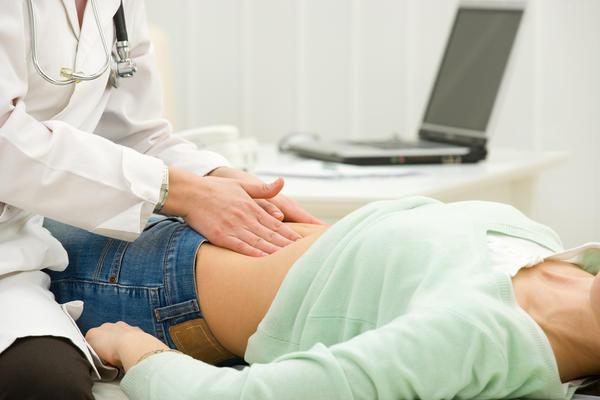
Diseases that cause pain in the navel area
If there is pain near the navel, the cause may be a number of diseases. The most common factors causing pain in this area are: • pregnancy; • damage to the intestines by bacteria, viruses or parasites; • acute stage of chronic enteritis. Characterized by the appearance of sharp/aching pain after eating; • umbilical hernia. It is characterized by the appearance of a compaction in the navel area. Associated factors: nausea, vomiting, constipation, increased gas formation; • intestinal ulcer; • inflammation of the appendix. It is characterized by the appearance of pain initially in the umbilical region, shifting to the right. Accompanied by nausea and fever; • damage to the urinary tract by various types of infections. It is characterized by the presence of pain during urination, which becomes permanent.
In addition, pain around the navel can be a consequence of very serious diseases, such as small intestinal cancer, small intestinal diverticulitis, abdominal migraine, small intestinal volvulus, mesenteric circulation disorders and abdominal aortic aneurysm.
Why does pain occur to the left of the navel?
The navel area, being the center of the abdomen, helps visually divide the abdominal cavity into four zones: two above and two below.
In the upper left part of the navel are the intestinal loops, stomach, spleen, pancreas and diaphragm.
In a number of different diseases, pain in the navel area is caused by a greatly enlarged spleen. The slightest carelessness or blow can lead to sudden rupture of the enlarged organ. A symptom of a ruptured spleen, in addition to pain, is a bluish color of the skin of the umbilical area.
Increased gas formation in the large intestine can also cause pain to the left of the navel.
If the pain is caused by a serious illness, then it is sure to be accompanied by symptoms such as fever, abnormal bowel movements, and an admixture of mucus or blood in the stool. The presence of black stools is considered particularly alarming, signaling gastric or intestinal bleeding.
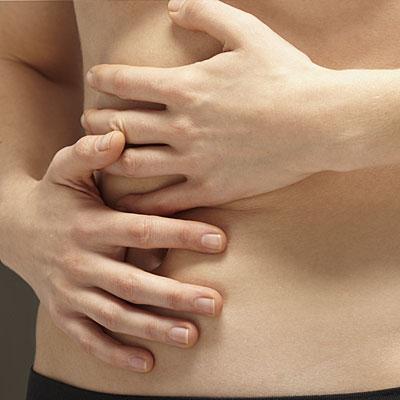
The cause of the appearance of not too sharp, often aching pain to the left of the navel, accompanied by nausea and vomiting, may be irritated gastric mucosa.
If the pain does not go away for more than a day, you should see a doctor; it may be caused by gastritis or the appearance of an ulcer.
If there is a sharp pain to the left of the navel, coming from the inside and accompanied by fever, nausea and vomiting, suspicion falls on the pancreas.
In addition, abdominal pain can be caused by viral pleurisy, pneumonia, or any process that irritates the lungs and causes sharp pain when taking a deep breath.
Pain in the lower left abdomen
The cause of such pain is usually considered to be inflammation, irritation or infection of the intestines, compression of the nerves leaving the spine and shingles. Also, the appearance of pain in this segment can be caused by a kidney stone moving down into the bladder.
Pain in the navel area can be called one of the most common symptoms, because this area of the abdomen contains a large number of important organs.
People who have abdominal pain to the left of the navel do not always seek medical help. But in vain, because this sign may indicate a rather serious illness.
Abdominal pain can be acute, chronic or paroxysmal. But, regardless of its nature, you need to remember that long-term discomfort that occurs regularly cannot be ignored.
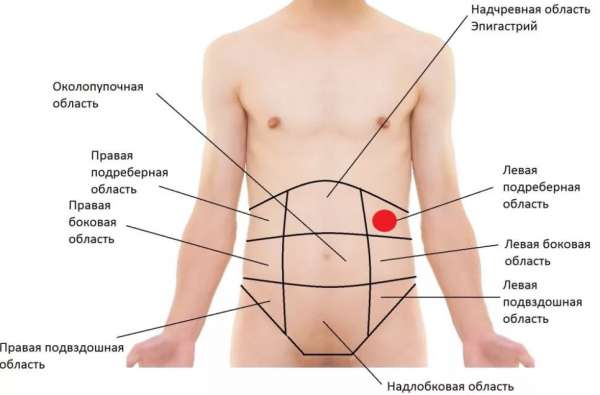
Preventive measures
The best preventive measure is timely contact with a specialist. It is much easier to treat the disease at an early stage. This will minimize the likelihood of complications. To prevent the re-development of intestinal diseases, you will need to follow a diet. Usually it is enough to adhere to proper nutrition standards. Prevention of cystitis and diseases of the urinary system usually consists of maintaining good hygiene. Additionally, it is recommended to visit a gynecologist at least once every six months. Most gynecological diseases at an early stage are asymptomatic. Noticing them on your own is quite problematic.
Pregnancy should be completely under the supervision of a doctor. You need to register in a timely manner. A woman must undergo all preventive examinations. You should not refuse hospitalization, even if the doctor recommends it for preventive purposes or in case of a minor threat.
Topographically, the fallopian (uterine) tube, the ureter, extending from the left kidney and opening into the bladder and sigmoid colon, are projected into the left side of the abdomen of the female body. Therefore, the cause of pain in the lower left abdomen in women, as a rule, is damage to one of these organs.
Causes of pain
Doctors identify several main diseases, one of the symptoms of which may be pain to the left of the navel. We should consider them in more detail:
- Pancreatitis. Stitching pains that occur to the left of the umbilical ring often indicate that a person is experiencing a pathological process in the pancreas. Doctors diagnose pancreatitis in more than half of sick patients. This disease is a kind of inflammation of the pancreas and leads to its degenerative changes. The disease is characterized by increased pain after meals rich in fat. In addition, pain can be felt when a person does not eat regularly, less than once every 6 hours. Pancreatitis has a number of symptoms: pain in the navel, “lump” in the throat, bad breath, frequent heartburn and nausea, problems with stool.
- Diverticulitis. The pathology in question is characterized by a rapid course and is more often observed in older people. The abdominal area hurts due to the fact that food remains are retained in the diverticulum, stones form and bacteria “settle”. Symptoms include severe abdominal pain to the left of the navel, increased body temperature, nausea, constipation, and vomiting with an unpleasant odor. In addition, the pathology can provoke intestinal bleeding. Only a doctor can make a diagnosis after palpating the abdomen. But often it is necessary to conduct additional instrumental studies, because pain from diverticulitis can be confused with appendicitis.
- Intestinal infection. Diarrhea caused by infection can cause a person to experience abdominal pain at the level of the navel. Very often, diarrhea is the only symptom. But, in addition to diarrhea, the patient may have a fever, chills and vomiting. Pain during an intestinal infection is always paroxysmal, caused by muscle spasms. If the sensations are too intense, you can take painkillers.
- Constipation. If abdominal pain occurs due to normal constipation, the patient is advised to eat more vegetables and fruits and drink plenty of water. Doctors rarely recommend taking laxatives, because the body can get used to them.
- Intestinal obstruction. Pain to the left of the navel with the pathology in question manifests itself when obstruction occurs on the left side. In addition to pain, a person is worried about vomiting, diarrhea, increased gas formation and bloating. Obstruction is treated only in an inpatient setting, so the patient should not take painkillers until the doctor arrives, even if the pain is very severe. It is strictly prohibited to use traditional medicine methods.
- Crohn's disease. If the stomach hurts to the left of the navel, then doctors may suspect the person has Crohn's disease. The pathology often occurs in a chronic form, but can also manifest itself in an acute form. In this case, doctors decide to perform surgery. Experts do not know exactly why this disease develops. They are inclined to believe that Crohn's disease can be inherited and appear due to smoking, allergies, frequent stress and weakened immunity. Symptoms include abdominal pain, bloody stools, chills, loss of appetite, anal fissures, and weight loss.
- Aneurysm in the abdominal aorta. Pathology is a protrusion of any part of a blood vessel and can lead to its rupture. Symptoms increase gradually and become significantly worse over several hours. The person experiences acute stabbing pain in the abdomen, severe dizziness, and may lose consciousness. Hypotension often develops, up to a critical level. Headache.
- Stomach diseases. This is one of the most common causes of pain in the navel area. If your stomach hurts on the left side, the reason may lie in poor diet, eating junk food and abusing drinks with gases.
The mucous membrane, which should protect the stomach from the influence of these negative factors, does not cope with the task, so a person may develop gastritis, ulcers, gastroduodenitis, pylorospasm and even cancer.
All the considered symptoms and warning signs cannot be ignored. A person who experiences abdominal pain on the left side should see a doctor for a correct diagnosis.
Pain in the lower left abdomen in women, developing due to damage to the sigmoid colon
In the case when painful sensations in the lower left abdomen intensify after a long walk, while driving on uneven roads, as well as before defecation, this condition may signal the localization of the pathological process in the sigmoid colon. Often, with inflammatory damage to the terminal part of the colon, pain is accompanied by painful tenesmus (false imperative urge to defecate). In the stool, which looks like meat slop, impurities of mucus, blood or pus are found, the stool is frequent and watery, with a fetid odor.
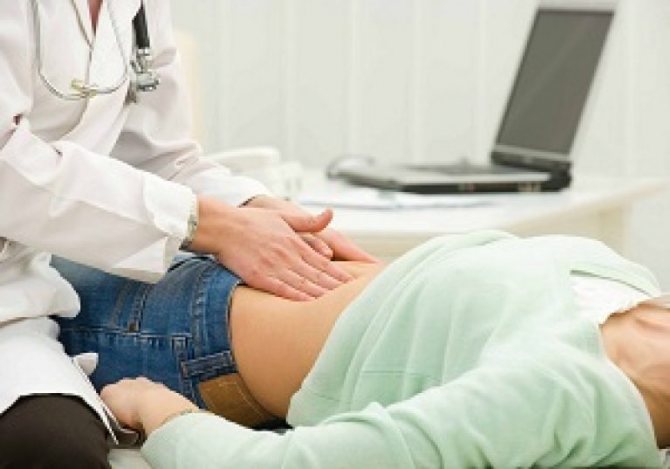
The sigmoid colon is the S-shaped end of the colon that extends into the rectum. Due to this anatomical structure, isolated sigmoiditis is very rare in clinical practice, since the inflammatory process almost always extends to the rectum.
The final formation of feces occurs in the sigmoid colon, and it is in this area of the large intestine, in places of physiological bends and narrowings, that stagnation of intestinal contents often occurs. Therefore, degenerative and inflammatory processes most often develop there, and benign and malignant neoplasms are also localized.
In addition to the development of the pathological process in the sigmoid colon, painful sensations in the lower left part of the abdomen occur with acute or chronic dysentery and other infectious processes, with Crohn's disease, chronic and nonspecific ulcerative colitis, circulatory disorders and sigmoid colon cancer.
Other causes of pain
In addition to the reasons already mentioned, doctors identify several more points that cause pain. They are:
- Hernia. If a person has experienced heavy physical activity or lifted weights for a long time, then he may develop a hernia, manifested by pain in the navel area. The patient experiences a burning sensation in the problem area and a slight bulge. Treatment in this case is based on surgery. The hernia can become strangulated and impair blood circulation in the body. The problem cannot be left to chance, as it can provoke serious complications, even the death of the patient.
- Problems with the genitourinary system. When pain to the left of the navel is accompanied by alarming symptoms indicating problems with the urinary tract, a person should immediately visit a urologist. The most common pathology characterized by similar symptoms is cystitis. The disease manifests itself when an infectious inflammation occurs in the bladder. The possibility of pyelonephritis should not be excluded. But in this case the pain is more acute and unbearable. Cystitis has the following symptoms: frequent urination, pain when passing urine, a burning sensation and severe pain, fever, pain during sexual intercourse. Chronic cystitis can cause kidney problems.
- Diseases of the spleen. The spleen is one of the most important organs of the human body, responsible for the disposal of dead cells and located on the left side of the abdomen.
The spleen filters bacteria and foreign organisms. If this organ is subject to inflammation, invasion and trauma, its tissue becomes loose.
The spleen can rupture if there is a sharp impact on it: a blow, an abdominal injury. A sign of this process is pain on the left. In addition, cyanosis of the skin occurs, spreading over the entire side.
If the problem is not diagnosed in a timely manner, there is a risk of death from severe bleeding.
Sometimes abdominal pain in men and women indicates kidney problems and even bowel cancer. Therefore, it is very important to promptly seek help from a qualified specialist.
Nature of pain
To correctly diagnose the disease, the pain symptom must be correctly described and classified.
In order to independently accurately determine the nature of the pain, you need to renounce the painful state as much as possible and remember:
- have similar sensations occurred before;
- whether the type and location of pain have changed since then;
- what events usually precede the onset of illness (for example, physical activity or exposure to rain, etc.);
- what additional symptoms accompany the pain?
This will help to more accurately determine their origin and type.
The pain is dull, closer to aching
If the pain is tolerable, and the lower abdomen aches rather than tugs, then most often such sensations signal problems with the stomach or pancreas.
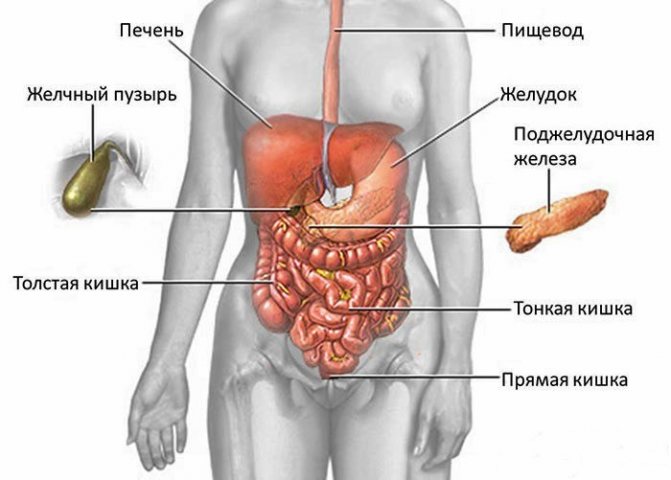
In this case, the malaise will be accompanied by additional symptoms:
- nausea and sometimes vomiting;
- subfibrile temperature (from 37 to 37.5).
The condition can be caused by eating provoking foods (for example, a lot of sweets at night, too fatty foods, especially when cold).
The cause of the malaise may be inflammation of the left ovary, or gynecological pathology of the uterus.
Then the clinical picture is usually supplemented by:
- discharge with blood from the vagina;
- a slight increase in temperature is possible.
If both ovaries are affected, the pain is floating, moving from left to right and back.
The source of dull pain in the lower abdomen can also be simple cystitis. In the chronic form, aching sensations are accompanied by:
- frequent urge to urinate;
- discomfort in the vaginal area.
You can relieve the condition by taking a hot bath.
In addition, aching pain in the left lower abdomen in a woman can be associated with tumor formations, varicose veins, bowel dysfunction, and inflammation of the hemorrhoidal vein.
Left-sided pain in the pelvic area can also be caused by a number of bone pathologies - postural deformation, fractures, inflammatory-destructive diseases of the spine.
Pulling sensations below
Mild nagging pain most often indicates an inflammatory process in the genitourinary system, which may be accompanied by:
- suppuration;
- pain that radiates to the lower back.
In this case, the pain may also go down to the left leg.
Irritable bowel syndrome, which has additional symptoms:
- constipation or diarrhea;
- bloating.
Often, with this ailment, spasmodic pain is superimposed on the pulling sensations in the lower abdomen.
Also, the cause of periodically occurring nagging pain may be a strangulated hernia or an inflamed area in the sigmoid or rectum.
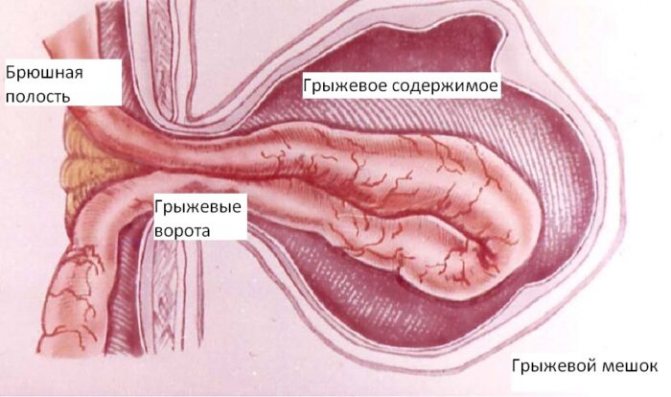
Strangulated hernia
Pelvic neuralgia resulting from varicose veins, hernial formations, and pinched nerves. She is accompanied by:
- pain in the back or perineum, aggravated by physical activity;
- fast fatiguability.
Nagging pain in the lower back often appears after intense experiences and as a result of prolonged stressful situations.
Cutting pain, sharp colic on the left side
Sharp pain, intensifying with palpation to the point of excruciating pain, may be anatomically justified torsion of the leg of the myomatous node (although in the normal state, neoplasms with uterine or ovarian fibroids do not cause pain, or easily tolerated discomfort is felt).
This anomaly may have additional symptoms:
- disturbance of uterine bleeding;
- constipation;
- dizziness;
- infertility.
If this is accompanied by rapid heartbeat, profuse sweating and lightheadedness, then surgical intervention is urgently required.
An ectopic pregnancy is easy to recognize by general signs:
- breast enlargement;
- pain in the mammary glands;
- toxicosis (nausea, vomiting).
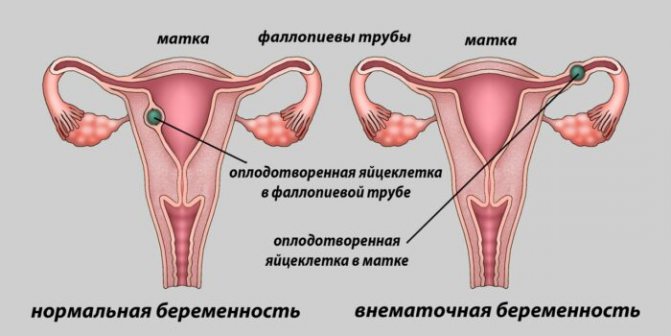
An abnormality is diagnosed on ultrasound.
Ovarian apoplexy (sudden rupture of the epididymal capsule), indicated by:
- sudden pallor;
- pressure drop;
- heart failure;
- general weakness;
- dizziness.
If you suspect apoplexy, you must immediately call an ambulance and wait for doctors, taking a horizontal position.
Acute left-sided pain can also be caused by the presence of infections such as dysentery, salmonellosis, gastroenteritis, or the presence of kidney stones or an attack of appendicitis.
Causes of pain in women
Pain in the navel area can be caused by gynecological diseases. Experts identify several main pathologies that can cause discomfort. They are:
- Ectopic pregnancy. Left-sided abdominal pain should alert a woman, because it may indicate the development of an ectopic pregnancy. This pathology often provokes internal bleeding and is therefore life-threatening. Treatment consists of surgery.
- Cyst on the ovary. Cysts occur on both the right and left ovaries. If your stomach hurts in the area of the navel on the left, then we are talking about a pathology of the left ovary. Due to the fact that the pain does not have a clear characteristic, only a qualified specialist can diagnose a cyst. Therapy consists of taking medications. If the treatment does not lead to the desired result, the doctor may perform surgery to remove the cyst.
- Endometriosis. Pathology manifests itself in women when uterine tissue grows outside the uterus itself. The pain in this case is increasing, more intense at the beginning of the critical days.
In addition to pain in the abdomen, a woman feels discomfort in the rectum and discomfort during sex.
Endometriosis is treated with anti-inflammatory and hormonal medications. If the problem is severely advanced, then doctors decide on surgical intervention.
Whatever the cause of pain in the navel area on the left, a person should promptly see a doctor who will conduct a proper examination and, based on its results, prescribe adequate treatment.
Pain due to gynecological pathologies
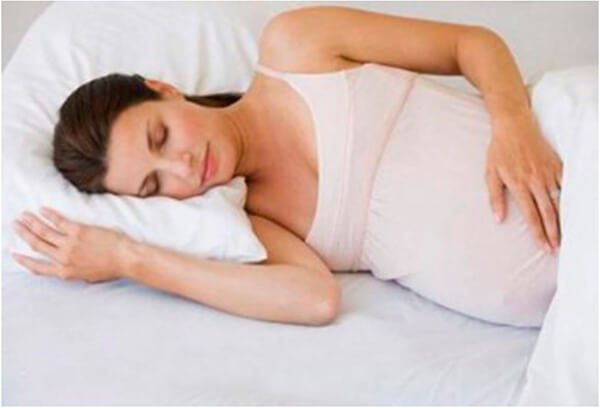
Aching pain in the side, which radiates to the lower back, can also be caused by the following gynecological pathologies in women:
- An ectopic pregnancy is usually accompanied by pain in the lower abdomen (can be on the right or left). In this case, the pain will increase and become aggravated by defecation or simply by standing in a standing position. Also, the pain syndrome is often cramping in nature.
- Sometimes pain during intrauterine pregnancy develops due to rupture of the fallopian tubes. This condition occurs during intense physical activity or sexual contact. The danger of such pain is that it can be accompanied by internal bleeding and lead to shock.
Treatment of pathology
As already mentioned, pain in the navel area on the left side has a different etiology and differs in the nature of its course. It will be possible to deal with the problem only if the underlying disease is cured.
Treatment options range from medication to surgery.
If a pathology of the gastrointestinal tract is diagnosed, the doctor strongly recommends a gentle diet that will normalize bowel movements, restore the intestinal microflora and relieve women from pain. Food should not be fatty, not spicy, not salty.
Traditional medicine recipes are allowed to be used as a supplement to medications. But before using them, you should definitely consult with your doctor.
If there are various chronic diseases, a person should be periodically examined to monitor their course. The appearance of pain indicates an exacerbation of the pathology.
The most dangerous conditions
In some cases, acute pain in the lower abdomen indicates the need to take emergency measures. In addition to appendicitis, the following conditions should be distinguished:
- The pathology is associated with ruptures of ovarian blood vessels during ovulation. The hemorrhagic form is especially dangerous, when significant blood loss is possible. Therapeutic measures are associated with conservative, medicinal methods.
- Torsion of the ovarian pedicle or cyst. This pathology stops the blood supply to the tissues, which leads to peritonitis. The only way to get rid of the problem is through surgery.
- Rupture of the fallopian tube during ectopic pregnancy. The pain is sharp and intense, which sometimes leads to fainting. In these circumstances, surgery is necessary.
Pain syndrome in the lower abdomen in women can have a different nature. Only a doctor can determine the reasons, and therefore it is necessary to visit him if unpleasant signs appear.
Nagging pain in the lower abdomen often occurs in women. As a rule, this occurs on certain days of the menstrual cycle and is the norm.
However, in some cases, the causes of pain can be quite serious. These include hormonal imbalances, abortion, pathological conditions of the pelvic organs, chronic problems with the abdominal organs, and even nervous disorders.
Treatment for many of them is urgent. Moreover, each disease has its own characteristics by which it can be identified.
Let's look at the possible causes of such painful conditions in the female body.
What not to do if you have abdominal pain
Any discomfort in the navel area should prompt a person to go to the doctor. There are several points that should be avoided before visiting a specialist:
- Applying heat to the problem area.
- Taking painkillers.
- Eating food.
- Attempts to defecate using laxatives.
The patient should be at rest and not experience any physical activity. If your stomach hurts a lot, you can apply dry ice to it.
Pain in the navel area cannot be called a symptom that indicates any one disease. Therefore, it is not possible to diagnose the problem yourself.
To make a final diagnosis, a person will have to undergo some tests, undergo a full examination of the body, have an ultrasound, x-ray and colonoscopy.
Only with the help of the results obtained is the doctor able to make a diagnosis, prescribe the necessary treatment and relieve the patient from pain.
Problems with the pelvic organs that cause pain
Female organs are very sensitive to hormonal changes. Therefore, during menstruation, nagging pain in the lower abdomen occurs in women, and possible reasons for this phenomenon are increased sensitivity during this period, underdeveloped genitals (young girls) and changes in the structure and shape of the uterus after childbirth or operations.
Pain syndrome appears during ovulation (days 14-16 of the cycle). In this case, the follicle ruptures and an egg is released. The soreness goes away after a couple of days and does not pose a danger to the body.
Pathologies and inflammation of the ovaries - in case of inflammation, the gynecologist will prescribe antibiotics; for various pathologies (tumors, torsions), surgical intervention may be indicated.
When taking hormonal drugs, ovarian hyperstimulation often occurs, which also causes nagging pain. In this case, it is necessary to discontinue the drugs.
Adhesions formed after surgical interventions. The adhesive process can be treated using physiotherapeutic procedures (electrophoresis, ultrasound).
Pain during sexual intercourse occurs as a result of physiological incompatibility of partners.
Sometimes this effect occurs when the uterus is bent or an STI is present. If the curvature of the uterus cannot be treated (it is necessary to choose the right positions for sexual intercourse), then you cannot delay the treatment of STIs (they can cause serious complications). It is necessary to identify the causative agent and urgently begin taking a course of medications for both partners.
Endometriosis is another root cause of pain in the lower abdomen. Endometrium
– mucous membrane. In case of its abnormal growth into the uterine cavity and neighboring parts, disturbances and painful sensations occur.
Ovarian apoplexy
– damage to small vessels, hemorrhage into the ovary. Happens as a result of physical activity. It can only be eliminated surgically.
Varicose veins of the pelvis cause discomfort and a feeling of heaviness, which intensifies after lifting weights and physical activity. It is detected during examination on a gynecological chair.
Drug treatment is effective in mild cases of the disease.
With polycystic ovary syndrome, unpleasant sensations appear in the suprapubic region and lower back. Treated with hormonal therapy. In the acute phase - removal of the cyst.
A benign tumor - myoma or fibromyoma - disrupts the blood supply. There is discomfort, heaviness, and aching sensations in the lower back. Eliminated by hormonal therapy and surgery.
Chronic infection in the uterus, ovaries and tubes (salpingoophoritis) disrupts the menstrual cycle and the functioning of the pelvic organs. The result is discomfort and pain.
Common reasons
Systematic discomfort in the groin area can radiate to the lower back, leading to pain in the left or right side. In any case, acute or chronic pain is a reason to visit a medical facility. After all, tingling in the lower abdomen on the right, left, or on the side indicates diseases such as:
- Peptic ulcer.
- Serious disturbances in the gastrointestinal tract (gastritis, pancreatitis, cholecystitis).
- Appendicitis.
- Diseases of the urinary system (cystitis, renal colic, pyelonephritis, as well as the presence of sand or kidney stones).
- Benign and malignant tumor formations.
- Intestinal infection.
- Peritonitis.
- Food poisoning of varying severity.
In order for the doctor to diagnose the cause of pain as accurately as possible and prescribe effective treatment, the patient needs to describe all components of his medical history as accurately and in detail as possible. You should not hide anything from your doctor, even unsuccessful attempts at self-medication!
Frankness and complete trust on the part of the patient, combined with the competence of the specialist, make it possible to get rid of tingling in the lower abdomen in the shortest possible time.
Pain in pregnant women
During pregnancy, pain in the abdominal area is very dangerous. It can arise for various reasons.
Light tugging sensations, which occur extremely rarely, should not cause concern. As a rule, they are associated with natural changes in the female body. If the pain is frequent and causes discomfort, then it makes sense to visit your gynecologist.
If during pregnancy pain is accompanied by vaginal discharge, call an ambulance immediately. There is a threat of miscarriage, and in later stages – placental abruption. An ectopic pregnancy may also be the cause. It develops outside the uterine cavity and is therefore very life-threatening.
A clear sign of such a pathology is a delay in menstruation.
Colitis in the abdomen during late pregnancy
Injections in the stomach during late pregnancy often begin due to intrauterine growth of the fetus, and accordingly, an increase in the reproductive organ. Because of this, the child puts pressure on the bladder, and during the period of urination or when the urge to go to the toilet, the stomach below provokes colic.
In mid-pregnancy she begins to prick in the lower segment of the belly during training contractions. At the end of the term, increasing long-term colic becomes one of the signs of imminent childbearing.
Very often, women go to the gynecological office with complaints of discomfort in the lower abdomen: nagging pain, tingling in the lower abdomen, etc. As a rule, this indicates purely female diseases that are associated with the reproductive system. Abnormalities can be detected in the uterus, cervix or appendages. Some types of other pelvic organ diseases can also cause frequent tingling sensations in the lower abdomen.
Doctors divide pain localized in the lower abdominal cavity into two types. The first type includes regular pain, appearing immediately before the start of the menstrual cycle, and receding with the cessation of menstruation. The second group (large) includes pain that is not associated with PMS.
Tingling in the lower abdomen can be caused, as gynecological practice shows, by the period of ovulation, dysmenorrhea or endometriosis.
But there are types of pain that are not associated with female diseases (gynecological). They can be caused by disturbances in the gastrointestinal tract:
- constipation (if caused by a tumor);
- appendicitis;
- intestinal obstruction;
- gastroenteritis;
- various inflammatory processes;
- paraproctitis;
- diverticulitis.
In addition, tingling in the lower abdomen is associated with some problems in the urinary system:
- pyelonephritis;
- urolithiasis disease;
- cystitis.
And now a little more about the causes of tingling in the lower abdomen associated with the menstrual cycle.
Acute tingling (sometimes dull, often with dysmenorrhea) in the lower abdominal cavity. Pain occurs during sexual intercourse or during bowel movements.
Acute tingling in the lower abdomen (less often dull), accompanying nausea, diarrhea (constipation), and increased urge to urinate. Pain appears on the eve of menstruation or directly during it.
Acute tingling in the lower abdomen, intensifying during the peak, and then gradually fading away. May be accompanied by slight bleeding (vaginal).
The most common causes of pain in the lower abdomen not associated with the menstrual cycle
Foci of inflammation in the pelvis cause severe pain (especially during intercourse), tingling in the lower abdomen, and cause the appearance of discharge (purulent).
A disturbed ectopic pregnancy is characterized by acute tingling in the lower abdomen (constant pain), vaginal bleeding. Such pain may be accompanied by fainting and a state of hemorrhagic shock.
Changing the position of the appendages (twisting)
Torsion of the appendage causes acute unilateral tingling, which is often accompanied by pain when touching the abdomen, vomiting and nausea. Such pain usually manifests itself during pregnancy and when the ovaries become larger than four centimeters (when they are stimulated).
Spontaneous abortion causes constant tingling and pain, which is accompanied by bleeding from the vagina.
Ovarian or uterine cancer
The pain does not appear immediately, intensifying gradually. Often accompanied by uterine bleeding.
With uterine fibroids, necrosis of the node is determined by sharp and rather strong tingling sensations. The pain, occurring acutely, is accompanied by bleeding from the vagina. It often appears at the beginning of pregnancy (up to twelve weeks), after an abortion or childbirth.
Usually, in response to complaints of “tingling in the lower abdomen,” doctors write out a referral for urine tests, an ultrasound of the appendages and uterus, and a pregnancy test is also performed. Modern technologies make it possible to quickly determine the causes of such pain, which allows timely treatment to begin.
* Dear friends! Yes, this is an advertisement, you have to spin like that!
Girls, tell me, please... 5th day of delay, all five tests are positive... Something is bothering me, a tingling sensation in the lower abdomen on the left. It’s too early to go for an ultrasound, the doctor won’t really say anything at this time... Maybe someone has had this happen? I want a baby so bad...



